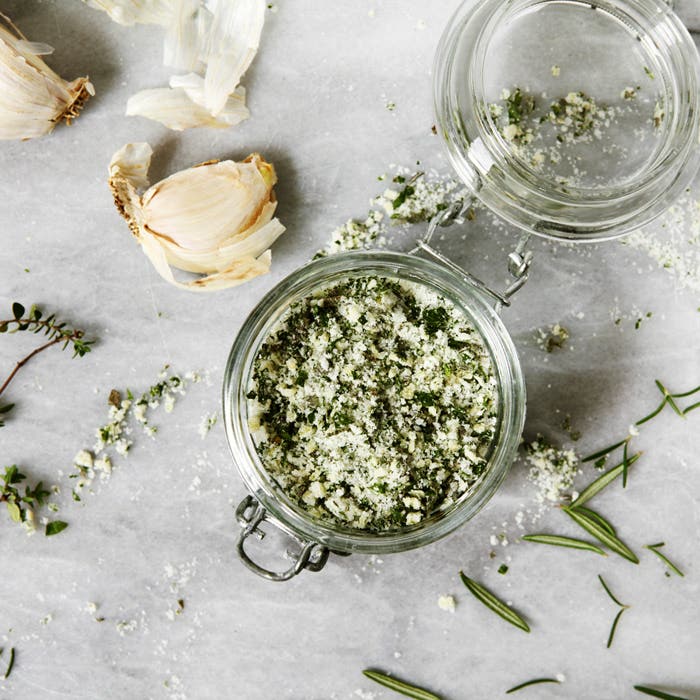
The Almost Lost Art of Bar-Le-Duc
Made of miniature currants hand-seeded with goose quills, it’s the caviar of fruit preserves.
Bar-le-Duc, the capital of the departement of the Meuse, in the region of Lorraine in northeastern France, is a small town, divided into two parts. The upper portion, on a hillside, reflects the prosperity of the town's medieval rulers, the dukes of Bar. The ducal fortress, now a museum, towers over this aristocratic section of town, which is filled with fine examples of architecture dating from the 15th to 18th centuries. Downhill, 11th-century buildings reflect a more modest past, and the small Ornain River and lovely Canal de la Marne au Rhin, which run through town, attract walkers, who come for the scenery, and fishermen, who come for the trout.
But it is jam, not scenery or architecture, that has given Bar-le-Duc its worldwide reputation. In the 1300s, the town's monks had the idea of removing the seeds from the red and white currants that grow in the region to make a particularly delicate but tangy-sweet preserve. By the time of the French Revolution, the town was producing over 100,000 pounds of the jam annually. Packaged in crystal jars, the confiture de Bar-le-Duc became the chic gift of choice among Europe's nobility. Mary Stuart, Queen of France in the late 1500s, called it "a ray of sunshine in a jar".
The jam's popularity continued into the 20th century. After World War II, however, this labor-intensive specialty, made by removing each currant's seeds by hand, had declined—and by the early 1970s, 91-year-old Rene Amiable was the only producer left, and he'd decided it was time to close shop.
"He didn't want to sell the family business," says Jacques Dutriez, who eventually convinced him otherwise. "Amiable was sure that if he did, the traditional way of making the jam would be forgotten. He said that he would rather see his jam live on in books than have it decline in quality and then disappear." But Dutriez, who was already in the preserves business in Bar-le-Duc, begged Amiable not to let this ancient art die—and promised that, if he were running the company himself, the product's quality would never be compromised. So, Amiable trained Dutriez for a year, and then sold him the business. Though Amiable died in 1977, his name still appears on the lids of jars of the confiture, along with that of Dutriez.
Confiture de Bar-le-Duc is like sweet caviar on the tongue, bursting with flavor with the "pop" of each currant. To create this unique product, fragile bunches of the small red and the rare white currants unique to the Bar-le-Duc area are cut from their bushes as they ripen each July. Only two varieties of currants—the versaillaise or the roudom—will do. "We tried to extend the season by planting a late-fruiting variety," says Dutriez, "but its fruit was too thick, it wasn't juicy enough, and the flavor wasn't the same."
Once gathered, the harvest is brought to the work table in Dutriez's cellar where a group of ten epepineuses, or seeders—relatives and local women ranging in age from 16 to 71—start by carefully detaching the currants from their stems. Next, holding each berry lightly between two fingers, they pierce its skin with a hollow goose quill, and then use the quill to remove the currant's six to eight seeds. When done correctly, the berry remains intact, filled with pulp but no seeds. (The most accomplished epepineuses can seed up to nearly nine pounds of the tiny fruit in a day.) The berries are then dropped into boiling syrup to preserve their flavor and color, and are reduced to a slightly liquid consistency. Once cooled, the jam is poured into small, faceted glass vessels. All this is done in a single day. "You can't wait until tomorrow in this business," Dutriez cautions.
Depending on the harvest, yearly production can vary from 5,000 to 20,000 jars. "Even without advertising, we sell what we make," says Dutriez. "There's never a problem with that." But in spite of the demand, he adds, and the high price tag for each 85-gram jar, there's not a lot of money to be made in the trade. Dutriez's son left the company for that very reason, and if no other heirs decide to carry on, the tradition will end when he decides to retire. He won't sell the company to strangers who might not continue the old methods, he says, any more than Amiable would have. Dutriez, too, says: "I'd rather that the jam live on in books."
Keep Reading
Continue to Next Story










